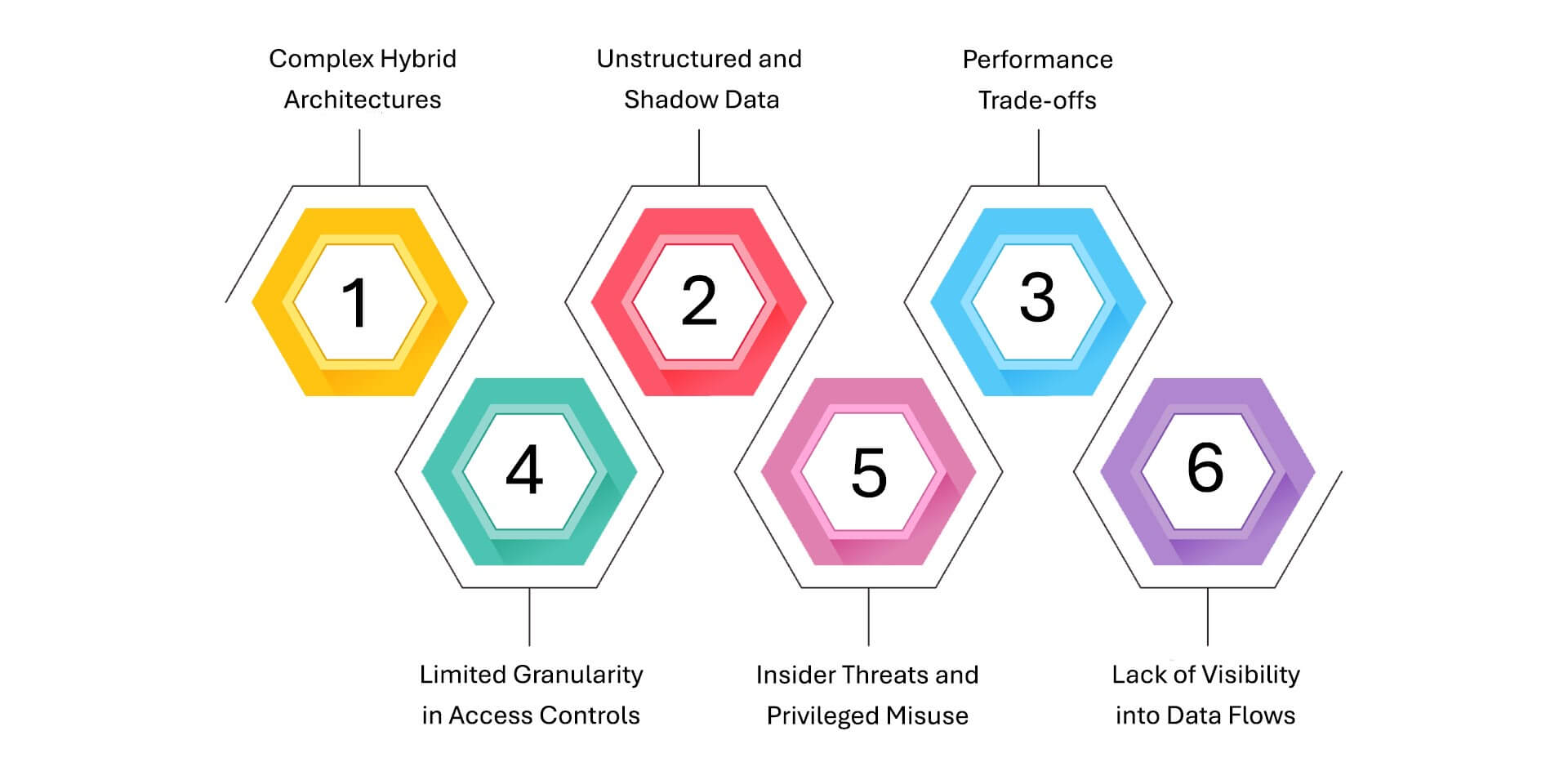What is Data Isolation?
Data isolation is segregating data— logically or physically—to prevent unauthorized access, maintain security, and support compliance. Whether implemented through dedicated environments, tenant-specific infrastructure, or access-controlled zones, data isolation ensures that one user, system, or workload cannot see or interact with another’s data unless explicitly allowed.
In modern enterprise ecosystems, isolation is not just about separation—it’s about precision control. As data volumes scale and threat surfaces expand, isolating sensitive, regulated, or business-critical data becomes foundational to everything from cloud security to ethical AI deployment.
Why Data Isolation Matters in 2025
Today’s enterprises operate in a highly federated, hybrid environment, spanning on-premises data centers, multi-cloud infrastructures, SaaS platforms, edge devices, and global teams. Data flows freely in this environment, but isolation ensures that access does not become exposed.
From a compliance perspective, isolation supports regional mandates (like GDPR or PDPL), role-based data access, and breach containment. From a security standpoint, it reduces lateral movement during cyberattacks and safeguards AI pipelines from data poisoning or unauthorized model training.
As AI continues to ingest vast amounts of enterprise data, isolating training sets, sensitive information, and operational inputs becomes a requirement, not a recommendation. AI-driven businesses must ensure that the wrong data doesn’t enter the right system.
Challenges in Data Isolation – And What to Do

Complex Hybrid Architectures
Data spans across legacy systems, multiple clouds, SaaS platforms, and edge devices—each with its own access protocols and security postures.
What to do:
Deploy a unified data governance layer that offers policy-based orchestration, automated discovery, and enforcement across environments. Look for platforms that support multi-cloud abstraction and integrate with native APIs for consistent enforcement.
Unstructured and Shadow Data
Files, emails, media, and other unstructured data formats often bypass traditional controls and live in hidden or undocumented locations.
What to do:
Implement AI/ML-powered data discovery tools that can identify, classify, and apply isolation policies to unstructured and shadow data, especially in collaboration platforms like SharePoint, Teams, and Slack.
Performance Trade-offs
Over-isolating data can limit collaboration, slow down analytics pipelines, and result in infrastructure overhead.
What to do:
Adopt dynamic isolation models that adapt based on risk context, role, and intent—balancing protection with productivity. Use smart segmentation, not hard walls.
Limited Granularity in Access Controls
Many organizations rely on legacy access controls that don’t support fine-grained restrictions at the file, field, or metadata level.
What to do:
Invest in attribute-based access control (ABAC) or role-based access control (RBAC) frameworks tied to data classification and context-aware rules, enabling precise, scalable permissions.
Insider Threats and Privileged Misuse
Data is often exposed not just by external threats but by internal users with excessive or unintended access.
What to do:
Combine data isolation with user behavior analytics (UBA) and zero-trust principles to detect anomalies and dynamically restrict access or quarantine data in real time.
Lack of Visibility into Data Flows
Without visibility into how data moves between systems and users, enforcing isolation becomes guesswork.
What to do:
Deploy end-to-end data lineage and traceability tools to monitor and visualize data movement, supporting both proactive containment and forensic analysis.
From Fragmentation to Control: Why Data Isolation Is a Cornerstone of Future-Ready Enterprise Strategy
As enterprises accelerate toward AI adoption, navigate mounting regulatory pressure, and operate in increasingly decentralized environments, data isolation is no longer just a security protocol—it’s a strategic infrastructure.
In AI-driven ecosystems, where models train on vast volumes of enterprise data, isolation ensures that only authorized, relevant, and ethical data flows into algorithms. It prevents unintentional ingestion of sensitive or non-compliant information, enabling explainability and reducing AI bias from the source.
In the compliance realm, isolation supports jurisdictional governance, ensuring that data remains within legal boundaries—geographically, contextually, and by purpose. It empowers enterprises to honor data residency, enforce retention timelines, and fulfill audit requirements without slowing down operations.
But perhaps most importantly, data isolation is how resilience is architected in the modern enterprise. In a world of ransomware, insider threats, and real-time digital service delivery, isolation enables containment, continuity, and confidence. It creates safe zones within hybrid ecosystems, allowing businesses to operate, adapt, and recover with minimal disruption.
Whether you’re deploying AI in healthcare, building sovereign cloud solutions in regulated markets, or transforming legacy IT infrastructure, data isolation is the connective tissue between innovation and integrity. It’s how enterprises move fast—without breaking trust.
Data isolation has evolved from an IT configuration into a strategic pillar of modern enterprise architecture. It empowers businesses to innovate securely, govern responsibly, and scale confidently in an AI-driven, compliance-heavy world. As threat vectors evolve and regulatory scrutiny intensifies, those who isolate with intelligence will lead with integrity.
Getting Started with Data Dynamics:
- Learn about Unstructured Data Management
- Schedule a demo with our team
- Read the latest blog: Sovereign AI and the Future of Nations: Why Data, Infrastructure, and Intelligence Must Align






